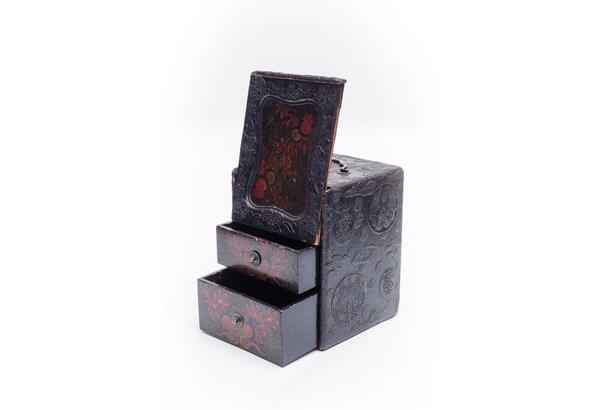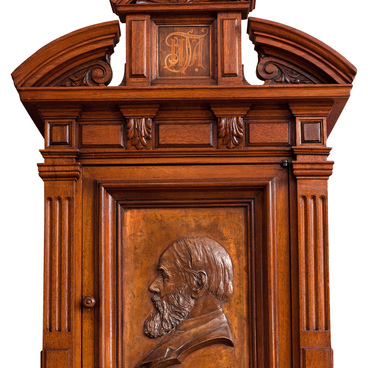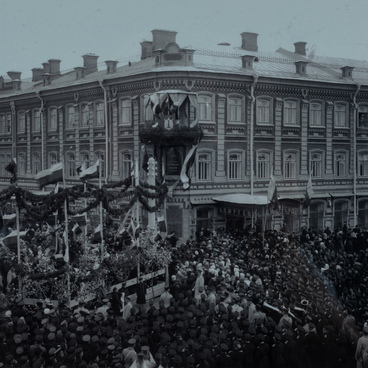Goncharov brought a whole collection of chests from his trip to Japan on board the frigate Pallada. He bought some of them, while others came as gifts during the negotiations with the Japanese. In his book “Frigate “Pallada”, the writer mentioned a few of those gifts,
Chest
Creation period
the mid-19th century
Place of сreation
Japan
Dimensions
13x12,5x16,5 cm
Technique
wood, papier-mache, lacquer
Collection
Exhibition
0
Open in app#1
Chest
#4
#5
One sent a small chest in black lacquer, with golden reliefs of temples, gazebos, mountains, and trees. The lacquer is uncommonly firm and black. It won”t come off in a lifetime and is smooth like a mirror. Such lacquered things can”t be found anywhere else in the whole world. Another little basket was speckled with red-gold stars embedded in the lacquer.
#2
The Ulyanovsk Museum of Local History houses three chests that used to belong to Ivan Goncharov. They were donated by Natalya Rezvetsova, who was married to the son of Alexandra Treygut-Rezvetsova — Goncharov’s adoptedd daughter.
The smallest chest is shaped like a trunk with a top handle. The lid covers three sliding compartments for small items. The wooden chest is painted with different colored lacquers. The central part of the lid and the front of the compartments are decorated with images of pomegranate fruit and floral ornaments against a black background. Traditional Oriental patterns of floral ornaments, cranes and phoenixes are embossed around the central image, as well as on the sidewalls of the box.
The earliest lacquer surface decoration known in Japan appeared around the 6th century. Local craftsmen adopted this technique from the Chinese, but not without changes: as a material, they chose resin of the lacquer tree urushi. At first, it was used to cover heads of arrows and spears to make them more solid, as well as woodenware and pottery to make them more water-resistant. Also, the lacquer was a perfect choice for the hot and humid Asian climate, as it protected items from deterioration. Later, craftsmen came up with the idea of treating fabrics with it to make them waterproof.
Over time, urushi lacquer found its way into the decorative painting. It was mixed with coloring agents, most often black, red and gold. Paintings performed in this technique have been found on battle helmets, scabbards, chests, and chopsticks.
#3
Ministry of Culture of the Russian Federation
read morehide
00:00
00:00
1x
Chest
Creation period
the mid-19th century
Place of сreation
Japan
Dimensions
13x12,5x16,5 cm
Technique
wood, papier-mache, lacquer
Collection
Exhibition
0
Open in app
Share



